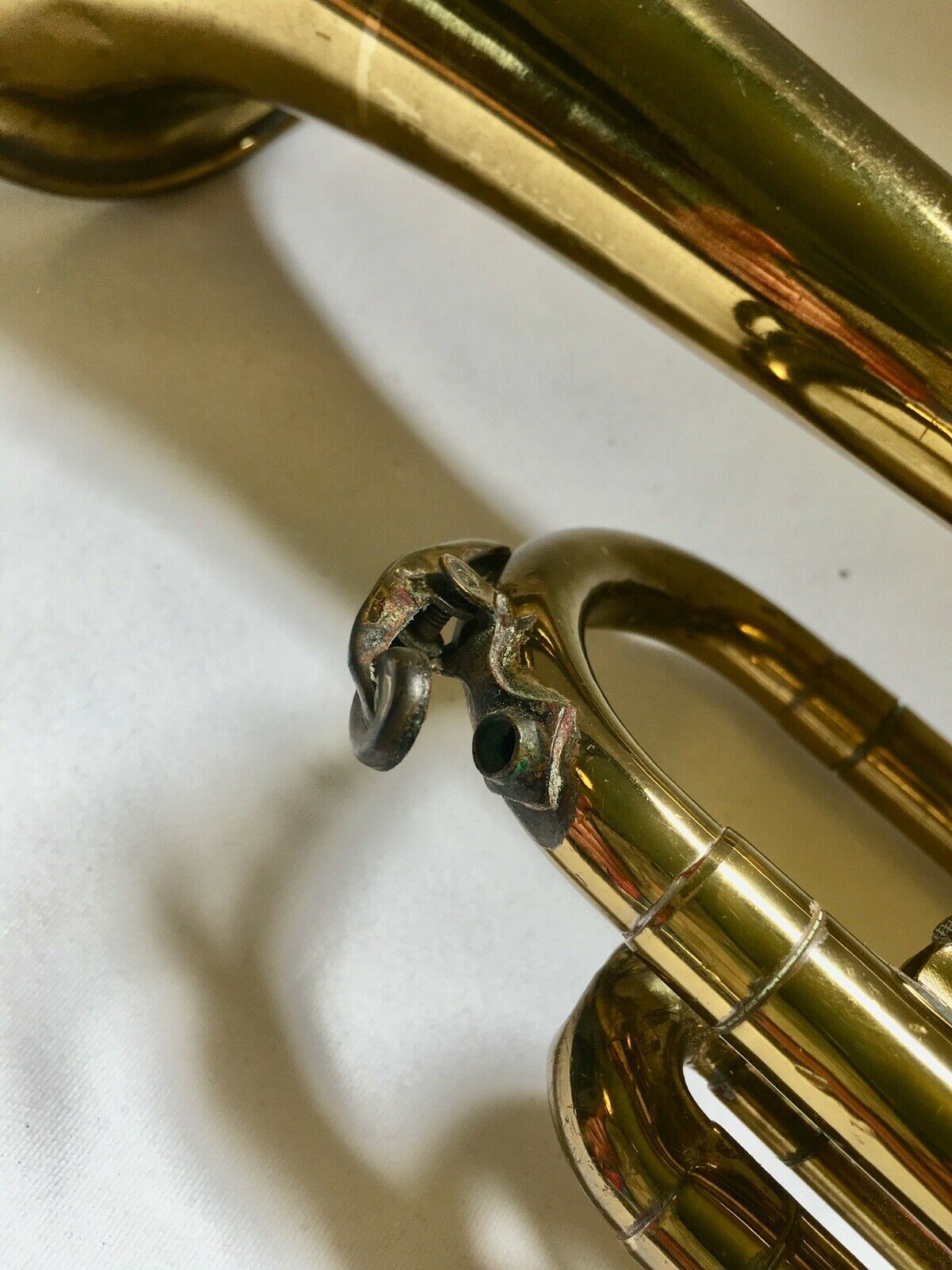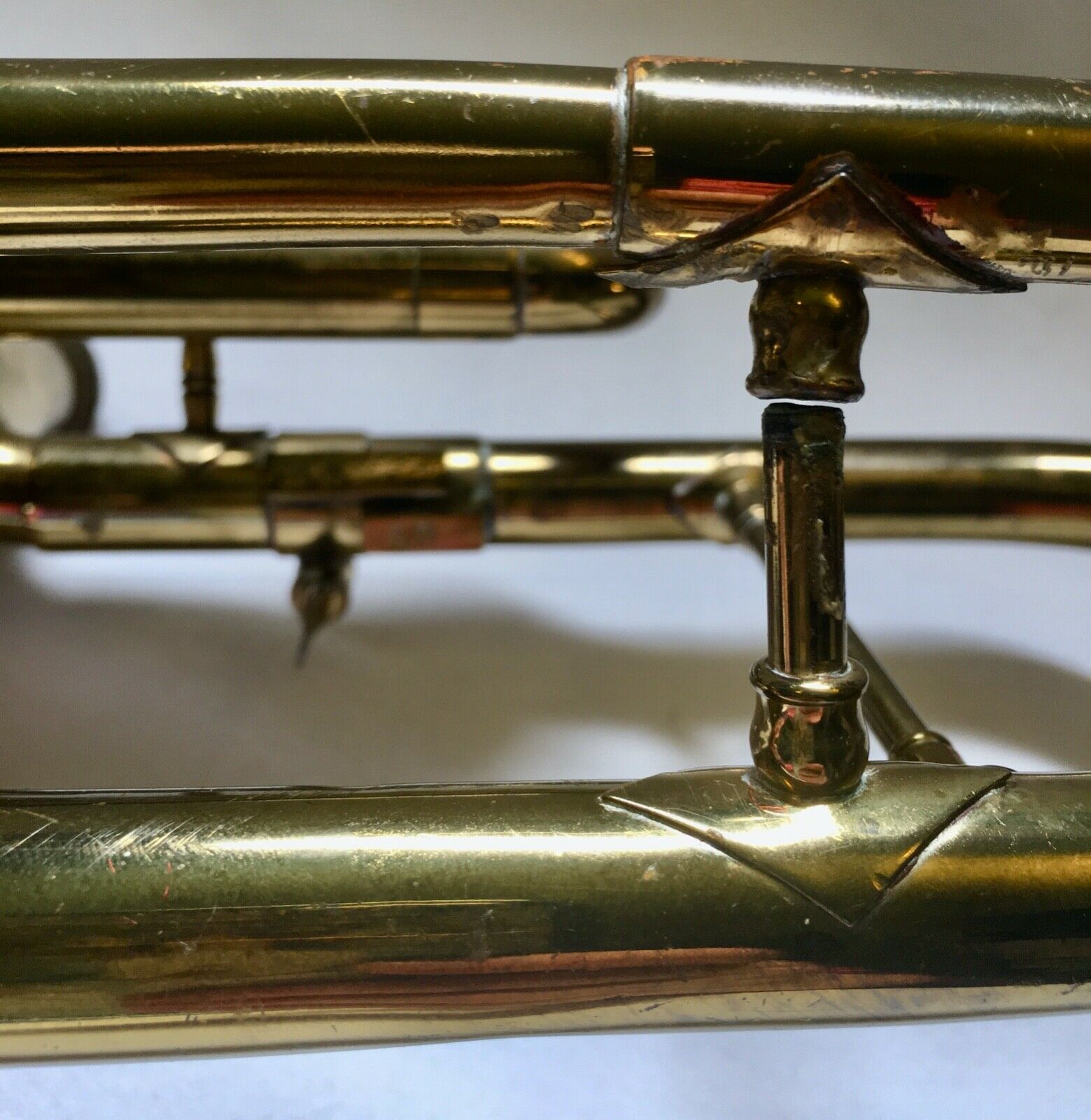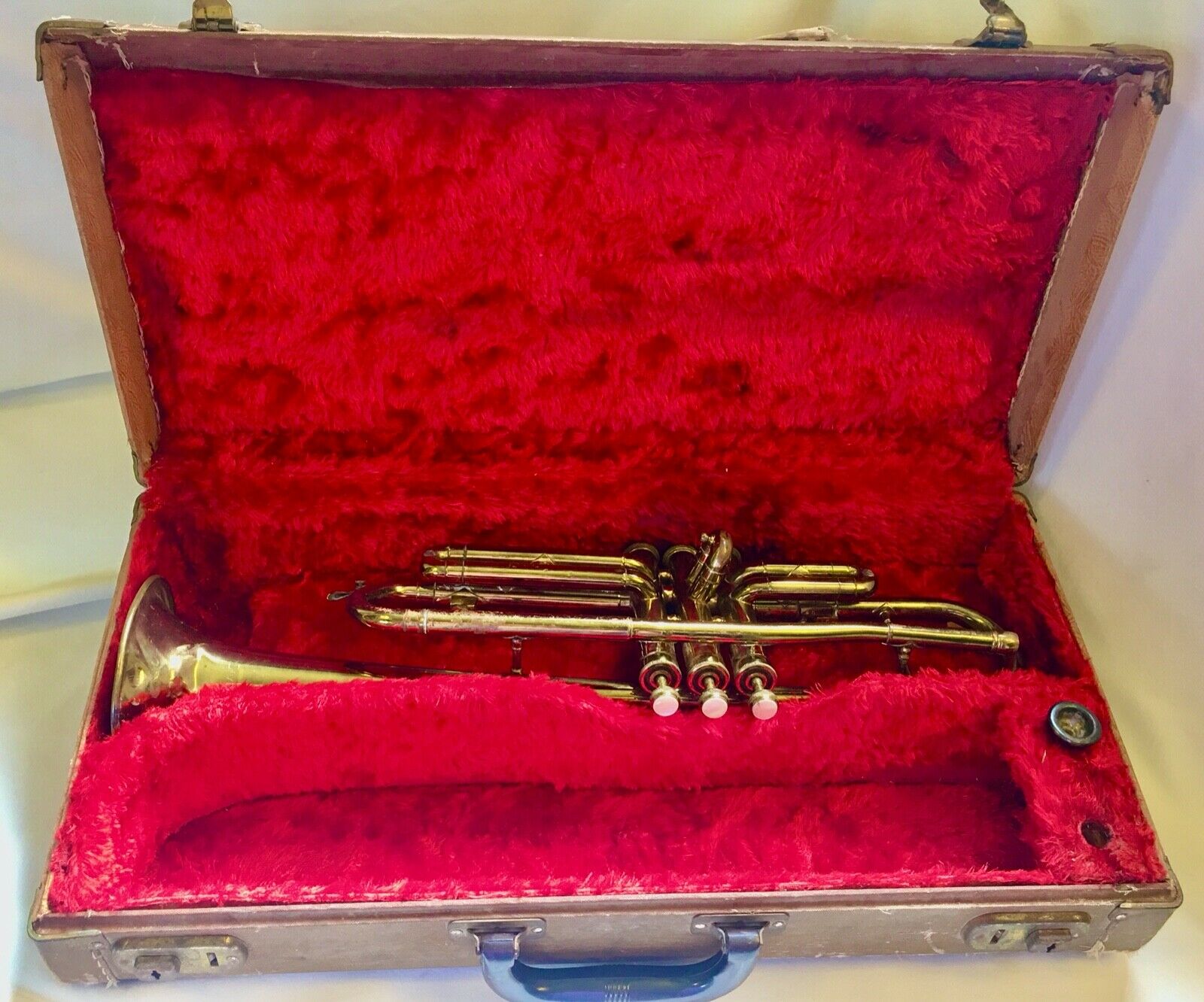-40%
Davis Shuman & Son Brass Trumpet New York City Juilliard Patent Applied Model 88
$ 261.36
- Description
- Size Guide
Description
Davis Shuman, born in Chudnov, Russia, on November 5, 1912, was known for his virtuosity on the trombone. He was a student at the prestigious Juilliard School of Music in New York City from 1937 to 1938, studying trombone with Fred Robbins, Jacob Raichman, and Ernest Clarke. He studied composition with Max Persin and Darius Milhaud. He conducted with Pierre Monteux.Davis Shuman later returned to Juilliard, becoming a distinguished member of the faculty in 1946. He also taught at Columbia Teachers College in 1947, and Music Academy of the West in 1957. He was a member of A.S.C.A.P, the Northeastern University Alumni Association, and a Mason.
He was a recording artist and composed and published music.
Prior to becoming a musician, Davis Shuman studied to be a civil engineer so that he'd have a regular job in case the music gig didn't pan out.
Through the course of his creative life, he managed to combine his talents, experimenting with novel configurations of brass instruments including the cornet, trumpet, and trombone. The bell assembly could be disengaged and pivoted at an angle, providing an easier fit for musicians crowded onto the stage. Davis Shuman obtained several patents for his inventions of unusual movable brass instruments, including US2947211A in 1958. This patent was granted in 1960.
Trouble is, most musicians and conductors did not care for the sound that came out of Shuman's inventions. The novel brass instruments may have been functionally clever, but their sound was reportedly not appreciated. The only people who actually used his instruments were his students; the instruments were not a commercial success, nor were they manufactured by known companies. Thus, his own mark on this trumpet.
There is little written about Davis Shuman, in fact, as was documented in an article by David Guion in 2017, entitled "Davis Shuman: neglected pioneer trombone soloist." Guion notes that Davis Shuman was purposely left out of the 1994 Michael Meckna collective biography entitled, "Twentieth-Century Brass Soloists." Guion suggested that Davis Shuman's inventiveness deserved at least some mention in the annals of brass history.
So why should this trumpet and ragged case be of interest to serious collectors? We believe the allure of this beat-up instrument is its connection to an inventor who was ahead of his time, a man who created instruments that are a rarity. Few of Davis Shuman's inventions appear to exist. Bottom line: we bet you don't have one of these, nor will you find one easily.
Just as ancient instruments remain a genre of interest to specialized collectors, we believe this instrument provides a glimpse into the inventive variants that remain part of the history of musical instruments.
Based on updated information we received from a knowledgeable collector after we first listed this for sale on eBay, we now date the
trumpet to 1957-1959 and believe it to be one of only a few Davis Shuman inventive trumpets known to exist.
We have gently cleaned the dust off of the trumpet, refraining from altering the original patina. No attempt has been made to repair numerous dents, nor a sticking valve. There is a visible gap on a part we assume should be connected. We do not represent ourselves as experts on brass instruments, merely literate folks who are handy with Google.
The included case is lined in red and provides storage for two mouthpieces, one of which is included. There is no evidence of a name or school on the outside of the case, suggesting it was a personal instrument. If only this battered case could talk. Where has it been, who owned it, what performances did it witness? By its condition, surely there were many.
One latch on the carrying case works, and one does not. Both show considerable corrosion.
We were honored to receive updated information from a knowledgeable collector after we initially listed this on eBay:
"FYI: I own an Angel, Model GT by Davis Shuman, and have a pdf of the US Patent. The manufacturer is, in my opinion, the Harry Pedler Company, based on physical comparisons of the valve block and numerous hardware design elements. Based on the original patent application date of 1955 and its grant in 1960, and the "patent pending" on the bell engraving, I'm guessing the date of mfr is sometime in the 1957-59 period. The 'claim to fame' documented in the patent is the floating bell design, where the bell is not attached to the leadpipe or valve block except at the point where the bell leaves the valve block. The resulting trumpet is actually sort of fragile, and a bit awkward to play. It appears to me that your horn might have been modified post-production to attach the rear of the bell to the mouthpiece receiver by a 'permanent' soldered fitting... which has since been unsoldered. A second difference between your horn and mine is the tubing wrap. Mine has a vertical main tuning slide which enters 3rd valve on the right, whereas yours is angled and enters on the left side, thus displacing the 3rd valve crook to the right side. That was also a characteristic frequently used by Harry Pedler, along with the male thread top valve caps. Incidentally, I doubt seriously that the 1000 number difference in s/n means that over 100 of these horns were ever made. Pedler made a lot of student grade horns, and I've only seen 3 of the Angel/Shuman designation (yours, mine, and one other) over the last 12 years."
Your purchase will be carefully packed and shipped via FedEx within 4 business days of receiving your cleared payment.
If you choose the free local pick-up option, we will contact you to arrange a convenient date, time, and place.
Our detailed photographs and meticulous descriptions assure that you will be pleased with your purchase.
Contact us if you have any questions before you finalize your purchase.
We do not accept returns.
This is a vintage item and SOLD AS IS.
We invite you to MAKE AN OFFER! It's our goal to find a good home for this unique brass instrument...




















